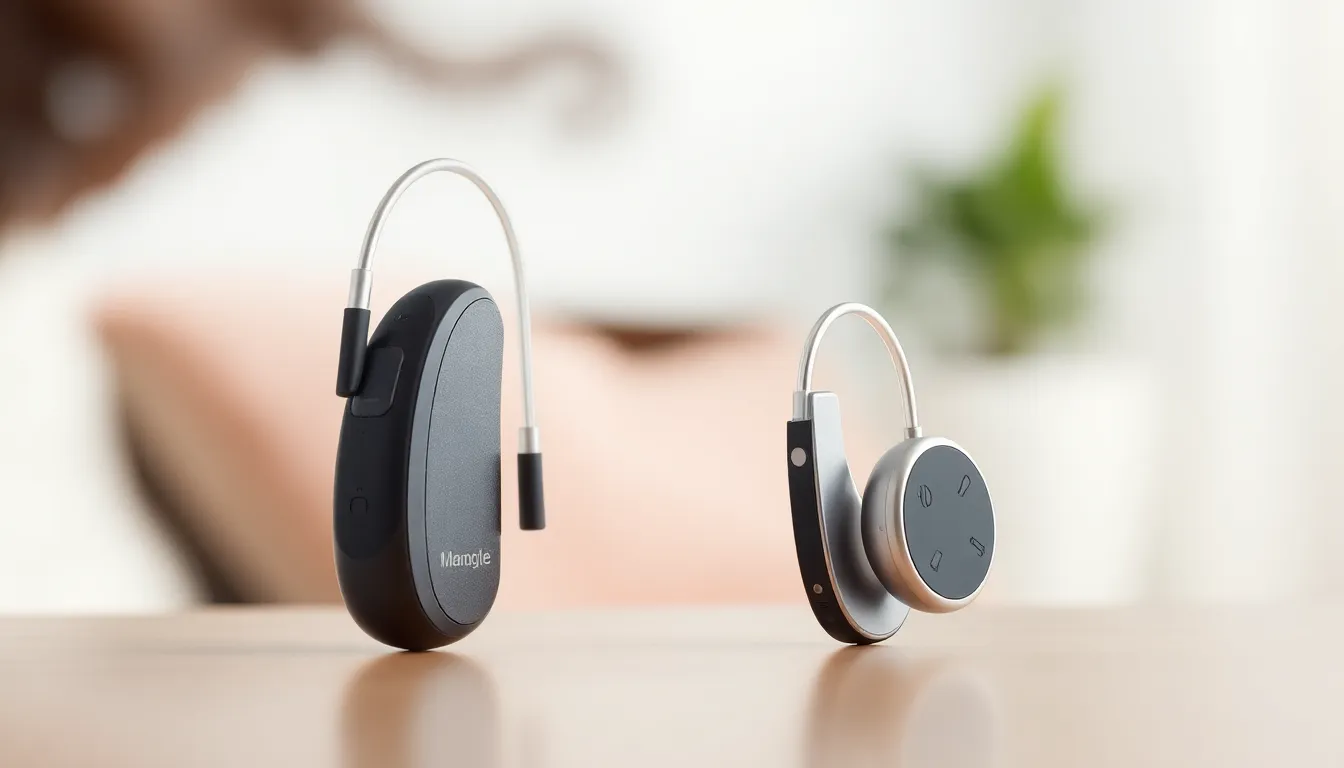Table of Contents
ToggleIn a world where technology shapes every aspect of life, smart hearing aids are revolutionizing how people experience sound. These advanced devices not only amplify sound but also adapt to various environments, providing users with a personalized auditory experience. With features like Bluetooth connectivity and smartphone compatibility, they seamlessly integrate into daily routines, making communication easier than ever.
As hearing loss becomes increasingly common, the demand for innovative solutions grows. Smart hearing aids combine cutting-edge technology with user-friendly designs, empowering individuals to reconnect with their surroundings. From enhancing conversations in crowded spaces to streaming music directly, these devices offer a glimpse into the future of hearing health. Embracing this technology can significantly improve quality of life, making it essential to explore the benefits and features of smart hearing aids.
Overview of Smart Hearing Aids
Smart hearing aids represent a significant advancement in auditory technology, combining sound amplification with intelligent features. They provide users with tailored sound experiences by adjusting to various environments automatically.
Definition and Functionality
Smart hearing aids are sophisticated electronic devices designed to enhance sound perception for individuals with hearing loss. These devices incorporate microphones, amplifiers, and digital signal processors to amplify sound frequency, enabling clearer hearing. They can distinguish between different types of sounds, such as speech and background noise, facilitating a more natural listening experience. By analyzing the user’s environment, these aids adjust to deliver optimal sound quality and clarity.
Key Features and Technology
Smart hearing aids boast several advanced features and technologies that set them apart from traditional hearing aids:
- Bluetooth Connectivity: Allows users to connect directly to smartphones and other devices for seamless audio streaming.
- Mobile App Integration: Lets users customize settings, adjust volume, and access hearing profiles via smartphone applications.
- Automatic Adaptation: Sensors detect environmental changes, adjusting sound settings in real time for optimal hearing.
- Directional Microphones: Focus on sounds coming from specific directions, making conversations clearer in noisy settings.
- Rechargeable Batteries: Offers convenience with longer battery life and eliminates the need for frequent changes.
- Telehealth Features: Enables remote adjustments and consultations with audiologists, enhancing accessibility to personalized care.
These features empower users to engage more effectively in conversations and activities, greatly improving their overall auditory experience in diverse settings.
Types of Smart Hearing Aids

Smart hearing aids come in various styles, each designed to meet specific user needs and preferences. Key types include Behind-the-Ear (BTE) and In-the-Ear (ITE) models.
Behind-the-Ear (BTE)
BTE hearing aids feature a case that sits behind the ear. A tubing connects the case to an earmold that fits inside the ear canal. This design accommodates various degrees of hearing loss, providing powerful amplification. BTE devices often include advanced technology, such as directional microphones and Bluetooth connectivity. Users can adjust settings easily through companion apps, enhancing their auditory experience in different environments.
In-the-Ear (ITE)
ITE hearing aids fit directly into the outer ear and cover the ear canal. Their compact size makes them less visible than BTE models while providing effective amplification for mild to moderate hearing loss. ITE devices support advanced features, including noise reduction and feedback suppression. Users can personalize their settings through mobile applications, allowing for a tailored auditory experience that adapts to changing environments. ITE models also often integrate rechargeable batteries, providing convenience and ease of use.
Benefits of Smart Hearing Aids
Smart hearing aids provide numerous advantages that significantly enhance the auditory experience for users. These benefits include improved sound quality, advanced connectivity, and seamless compatibility with other devices.
Improved Sound Quality
Improved sound quality ranks as one of the primary benefits of smart hearing aids. These devices utilize advanced technology, including multiple microphones and digital signal processors, to deliver clearer sound. Smart hearing aids can distinguish speech from background noise, allowing users to engage in conversations without straining. Features like automatic noise reduction adjust sound settings based on the environment, ensuring optimal sound clarity in diverse settings, from quiet rooms to bustling cafes. Users experience enhanced hearing through personalized settings tailored to individual preferences, making communication more effective and enjoyable.
Connectivity and Compatibility
Connectivity and compatibility with modern devices enhance user experience with smart hearing aids. Most models offer Bluetooth connectivity, enabling users to stream audio directly from smartphones, tablets, or televisions. This feature allows for hands-free phone calls and direct music streaming, improving daily interactions. Additionally, mobile app integration enables customization of hearing settings, adjusting sound profiles easily based on various environments. Smart hearing aids also facilitate remote consultations with audiologists, allowing for timely adjustments and ongoing support without needing in-person appointments. These connectivity features empower users to integrate their hearing aids seamlessly into their digital lives, enhancing both communication and entertainment experiences.
Considerations When Choosing Smart Hearing Aids
Several factors influence the selection of smart hearing aids. Evaluating aspects such as budget, personal needs, and preferences ensures the best choice for an individual’s unique auditory situation.
Budget and Pricing
Budget plays a crucial role in selecting smart hearing aids. Prices typically range from $1,000 to $6,000, depending on features and technology. Premium models often offer advanced functionalities, including real-time adjustments, multiple programs, and enhanced noise reduction. Users should consider not only the initial purchase price but also potential maintenance costs, such as batteries or repairs. Some insurance plans and health savings accounts may cover part of the expenses, easing the financial burden.
Personal Needs and Preferences
Personal needs and preferences significantly impact the selection of smart hearing aids. Individuals with varying degrees of hearing loss might require specific features, such as directional microphones for noisy environments or telehealth integration for remote audiology consultations. People should assess their lifestyle, too; those who frequently engage in social settings may prioritize noise-cancellation technology, while active individuals might value waterproof or sweat-resistant models. Moreover, compatibility with smartphones or other devices can enhance user experience, offering ease of accessibility and control through mobile applications.
Smart hearing aids represent a significant leap forward in auditory technology. Their ability to adapt to various environments and integrate with modern devices makes them invaluable for individuals experiencing hearing loss. As these innovative solutions continue to evolve, they promise to enhance communication and enrich daily life.
With options like BTE and ITE models, users can find the perfect fit for their needs. The combination of advanced features such as Bluetooth connectivity, mobile app customization, and telehealth capabilities ensures that everyone can enjoy a tailored auditory experience. By embracing smart hearing aids, individuals can reclaim their connection to the world around them and improve their overall quality of life.







